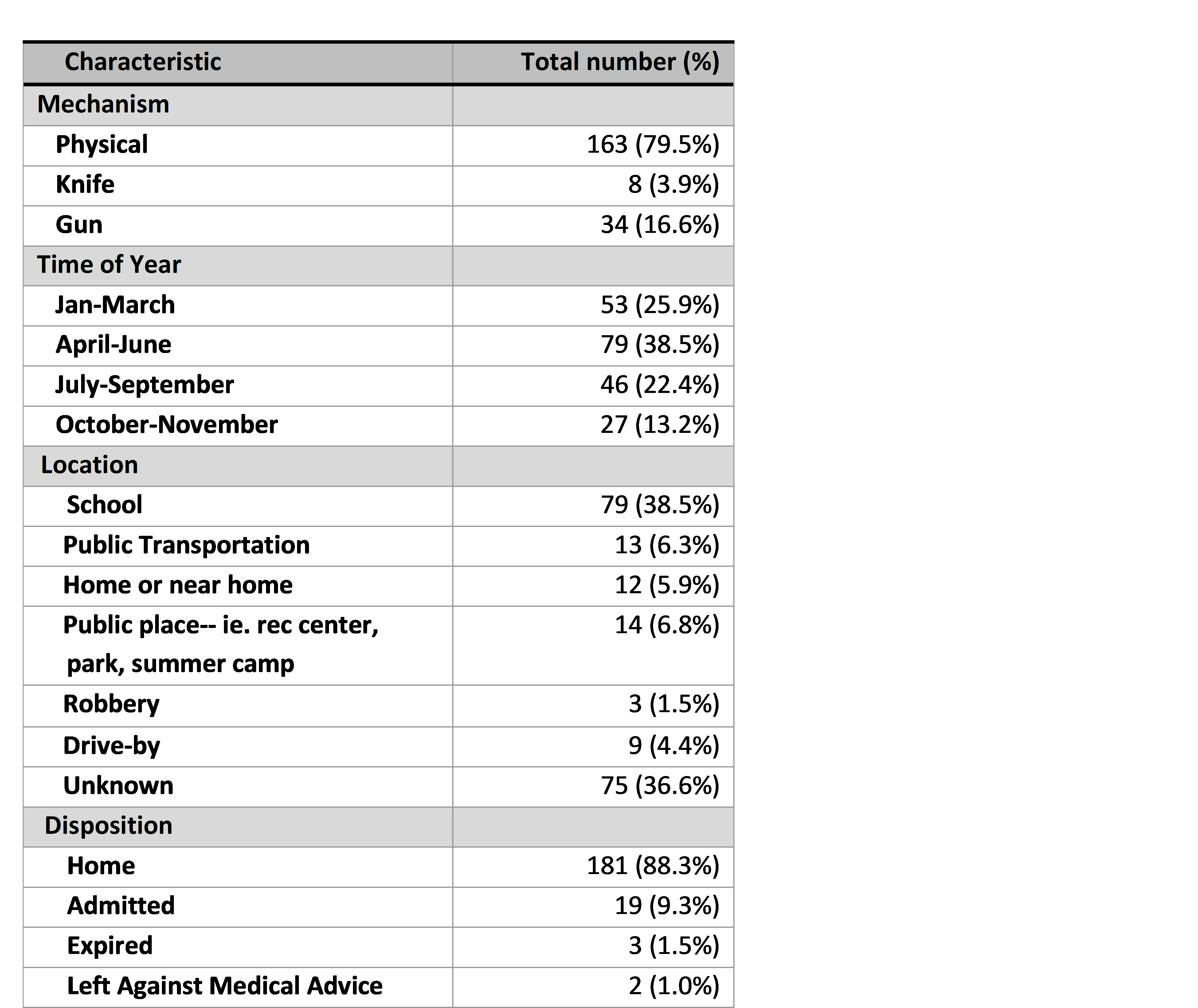Injury Prevention
Injury Prevention 2
316 - Epidemiology of School-aged Youth Seeking Emergency Care for Assault Injuries
Monday, May 1, 2023
9:30 AM - 11:30 AM ET
Poster Number: 316
Publication Number: 316.42
Publication Number: 316.42
Ariella Weinstock, Children’s National Hospital, Washington, DC, United States; Katie Donnelly, Children's National Hospital, Washington, DC, United States
.jpg)
Ariella Magen Weinstock, MD, MSEd (she/her/hers)
Pediatric Resident
Children’s National Hospital
Washington, District of Columbia, United States
Presenting Author(s)
Background: Previous episodes of violence remains among the strongest predictor of future gun violence and death by homicide. Up to 20% of youth admitted to the hospital for violent injury will die by violent injury within 5 years. Studies show that hospital-based intervention programs (HVIPs) are effective in preventing future incidents of violence. Yet, most of the research has focused on patients over the age of 16. Past studies have identified risk factors for youth assault injuries, including substance use, prior Emergency Department (ED) visits for assault or mental health. Younger teens with assaultive injuries may have different characteristics and exposures. Describing this population will help optimize ED-based prevention programs.
Objective: We sought to describe patients presenting to the ED for youth violence such as physical assault, stabbing or gunshot wound, as well as the context of the injury, and disposition from the ED.
Design/Methods: We performed a retrospective chart-review analysis of children that presented to the ED for violent injury and met criteria for inclusion in the HVIP from January 1 through November 31, 2022. Patients qualified for the HVIP if they were between the ages 10-18, suffered a physical assault and lived in the geographic catchment area. The program excludes patients whose injury is due to dating violence, child abuse, and sexual assault. We performed univariate and multivariate analyses to identify significant relationships between patient characteristics and assault injury.
Results: A total of 205 patients met inclusion criteria. Of these, 59.0% were male, 77.6% were Black, and 14.6% were Hispanic (Table 1). The median patient age was 14 years old, SD=1.76. Physical assault was the most common mechanism of injury (79.5%), compared to gunshot wounds (16.6%) and stabbings (3.9%) (Table 2). The odds of having a gunshot wound was 2.23 times higher in males compared to females (p < 0.01). Assault injuries were acquired at schools in 38% of cases. Assault as school was inversely related to age (OR 0.82, p=0.021). After adjusting for age, the odds of an assault at school in April-June was 2.71 higher, compared to July-September (p = 0.015).
Conclusion(s): Younger patients presenting for non-accidental violent injury to the emergency department have unique characteristics. Next steps include comparing to a control population matched for age, gender, and race to identify risk factors. Long term, our goal is to use this data to optimize pediatric focused HVIPs.


